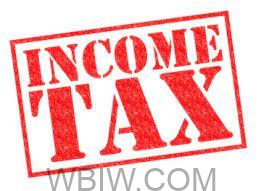
INDIANA – The Department of Local Government Finance issues this memorandum to inform the public of legislative changes concerning local income taxes.
Please note that this memorandum is for informational purposes only, and it is not a substitute for reading the law. Except as otherwise stated, all provisions are effective July 1, 2023.
Legislation Affecting Local Income Taxes.
Local Income Tax Distribution Changes
On May 4, 2023, Governor Eric J. Holcomb signed into law House Enrolled Act 1454-2023 (“HEA 1454”). Section 77 and 78 of HEA 1454 specifies that if a county-adopting body passes an ordinance changing the allocation of local income tax revenue to a local taxing unit, the county-adopting body must provide direct notice to the impacted unit(s) within 15 days of the passage of the ordinance. This notice is in addition to the public notice that is currently required under Ind. Code § 6-3.6-3-7(b) (local income tax councils) and Ind. Code § 6-3.6-3-7.5(b) (county councils). Additionally, the county adopting body must provide confirmation to the Department and the Department of Revenue that direct notice was provided to the affected local taxing units after notice to the underlying units has been provided and within fifteen (15) days of the passage of the ordinance.
Section 75 of HEA amends Ind. Code § 6-3.6-3-3 specifies that a local income tax ordinance changing the tax rate or the allocation of revenue received from a local income tax rate does not take effect if the county-adopting body fails to provide notice to the impacted unit(s). If the county adopting body fails to provide the required notice and the adopted ordinance does not take effect, the tax rate or allocation shall be the lesser of the:
- Applicable distribution schedule for the certified distribution for the upcoming calendar year; or
- Applicable distribution schedule for the certified distribution for the current calendar year.
The tax rate or allocation of revenue received from a local income tax rate determined above will remain in place until a subsequent ordinance is adopted and the required notifications have been made to the impacted unit(s). The subsequent ordinance is subject to the applicable statutory deadlines as of the date it is adopted.
Judicial Local Income Tax
On May 4, 2023, Governor Eric J. Holcomb signed into law Senate Enrolled Act 417-2023 (“SEA 417”). Section 2 of SEA 417 adds Ind. Code § 6-3.6-6-2.9 specifies that a county fiscal body may adopt an ordinance to impose a local income tax rate for county staff expenses of the judicial system. The tax rate adopted must be in increments of one-hundredth of one percent (0.01%), and the total rate may not exceed two-tenths of one percent (0.2%). Additionally, the tax rate may not be in effect for more than 25 years.
Any revenue generated by the judicial local income tax rate must be distributed directly to the county before the remainder of the expenditure rate is distributed, and the revenue attributable to the rate must be maintained in a separate dedicated county fund. Additionally, the revenue budgeted and spent by the county may not comprise more than fifty percent (50%) of the county’s total budgeted operational staffing expenses for the judicial system in any given year. If a county imposes a judicial local income tax rate, the county must report staffing and expense information for the previous year to the Justice Reinvestment Advisory Council by May 1.
Correctional Facility Local Income Tax
Section 79 of HEA 1454 amends Ind. Code § 6-3.6-6-2.7 increases the maximum local income tax rate for correctional facilities from two-tenths of one percent (0.2%) to three-tenths of one percent (0.3%); however, this maximum rate is only available if the county has outstanding bonds or lease obligations as of July 1, 2023, for which the local income tax revenue has been pledged. If a county does not have an outstanding bond or lease obligation that is being paid out of the correctional facility’s local income tax revenue, the maximum rate remains two-tenths of one percent (0.2%).
This section also includes changes to operating expense limitations currently in statute. Current law states that up to twenty percent (20%) of revenue can be used for operating expenses for county jail facilities. Under the new language, an amount that is equal to the amount of revenue attributable to two-tenths of one percent (0.2%) of the tax rate may be used for operating expenses.
EMS Local Income Tax
As adopted during the 2022 Legislative Session, Ind. Code § 6-3.6-6-2.8 authorized a county council to adopt an ordinance imposing a local income tax rate for emergency medical services in the county. This section applied only to counties that:
- Provide emergency medical services (as defined in Ind. Code § 16-18-2-110) for all units in the county; and
- Pay one hundred percent (100%) of the costs to provide those services.
Section 80 of HEA 1454 removes the requirement that a county must provide one hundred percent (100%) of emergency medical services for all units in the county to be eligible for the adoption of an emergency medical services local income tax rate.
Local Income Tax Supplemental Distribution for Levy Freeze
On May 4, 2023, Governor Eric J. Holcomb signed into law House Enrolled Act 1499-2023 (“HEA 1499”). Section 15 and 16 of HEA 1499 amends Ind. Code § 6-3.6-9-15 specifies that a county may adopt an ordinance to require that a local income tax supplemental distribution first be distributed and used to lower the county’s levy freeze tax rate. Any remaining distribution revenue would then be distributed to taxing units. This change will only affect the eleven (11) counties that currently have a levy freeze.
The counties that currently have a levy freeze are Brown, Carroll, Jasper, Jay Co, Marion, Morgan, Parke Pulaski, Wabash, Warren, and Wells County.
Contact Information
Questions may be directed to David Marusarz, Deputy General Counsel, at dmarusarz@dlgf.in.gov.



